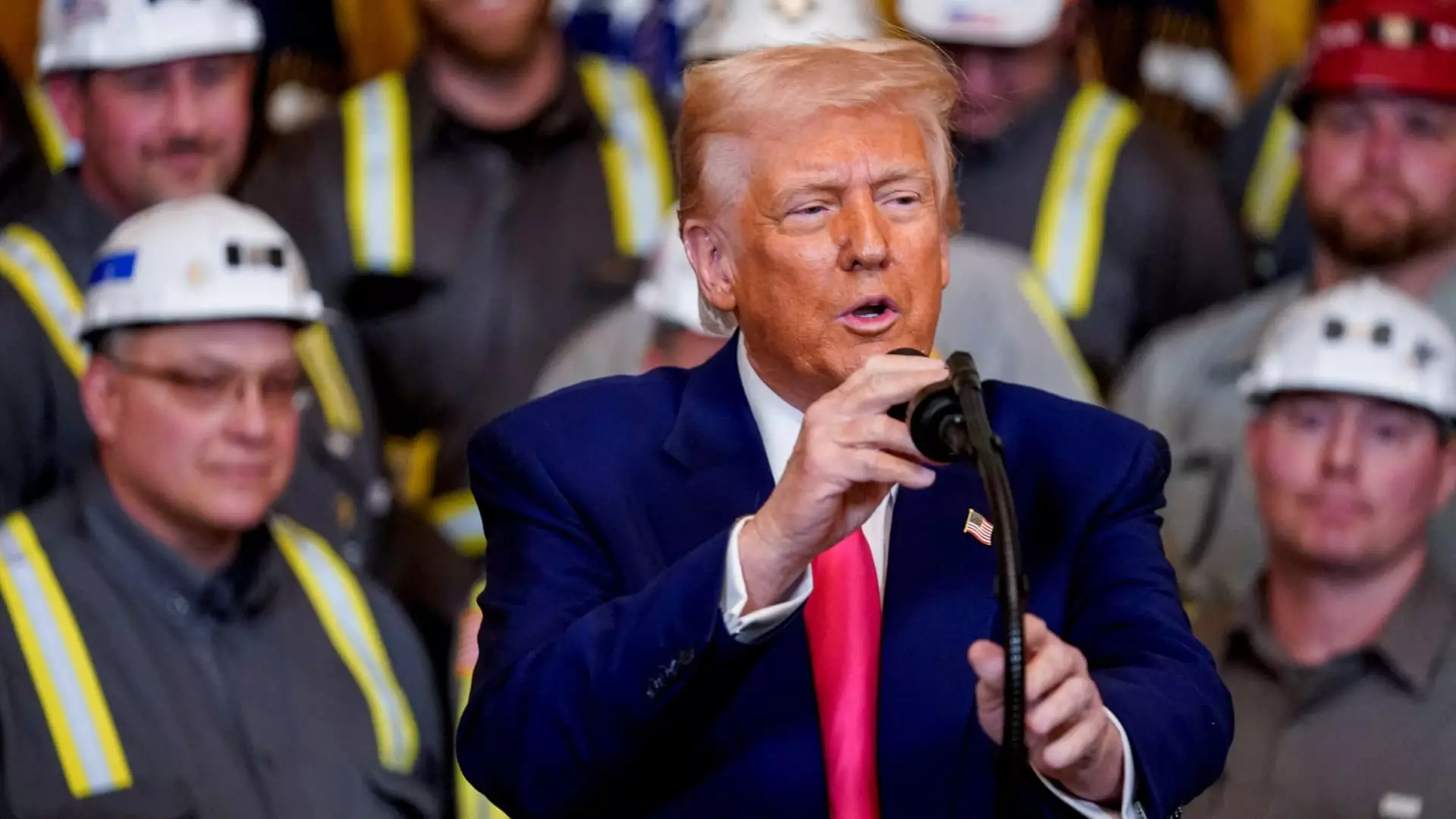In the turbulent landscape of American energy policy, President Donald Trump’s decision to revive the long-faded coal industry through a push for coal-powered data centers serves as a stark reminder of the ongoing tug-of-war between traditional fossil fuels and sustainable energy solutions. While his intentions may stem from a desire to bolster job creation in struggling coal regions, the overarching risks associated with such a strategy disregard the environment and the economic viability of pursuing outdated technologies. The reality is that the coal industry’s decline, a trajectory spurred by legitimate environmental concerns and market forces, cannot simply be reversed through executive orders and nostalgic rhetoric.
Trump’s April executive order aimed to coordinate his Cabinet’s efforts in identifying coal infrastructure suitable for meeting the burgeoning power demands of artificial intelligence (AI) data centers, frequently propped up as the frontier of technological advancement. However, the persistent promotion of coal as a viable energy source for these facilities clashes with the industry’s long-term sustainability goals. By fixating on coal, the Trump administration risks shackling the country to a more carbon-intensive future—one that remains incompatible with the urgent need for cleaner alternatives.
Contradictions in America’s Energy Landscape
One of the fundamental contradictions lies in the heavy environmental toll of coal. According to the Energy Information Administration (EIA), coal remains the leading energy source for carbon dioxide emissions per kilowatt-hour, only competing with oil. While tech giants have poured billions into renewables and nuclear energy to mitigate climate change, an inexplicable reliance on coal will likely extend the lifelines of aging plants, stalling progress toward cleaner alternatives. It is unsettling to consider that in an era where the conversation surrounding climate action is at the forefront, a major political leader is advocating for solutions grounded in the past.
Furthermore, it isn’t just the environmental implications that present a cause for concern; the economic landscape also merits scrutiny. Peabody Energy CEO James Grech’s assertions regarding coal’s ability to meet newfound power demands through increased dispatch may paint an illusion of revival, but the reality speaks differently. An industry that provided 51% of U.S. electricity in 2001 now accounts for merely 16% of generation—declining in both output and public favor. To merely halt retirements of coal plants overlooks the substantial infrastructural investments necessary to modernize an outdated system.
The Nuclear Choice: A More Viable Future?
What’s fascinating is the emerging dialogue within the tech sector that recognizes the need for fossil fuels to maintain grid reliability, yet simultaneously gravitates toward natural gas, which produces significantly fewer emissions than coal. This conversation elevates nuclear energy as a genuine competitor, surfacing its potential to meet the electricity demands of industries reliant on rapid data processing without compromising environmental commitments. Industry leaders like Kevin Miller from Amazon have openly acknowledged the need for a diverse energy strategy to meet evolving demands, indicating an acknowledgment that simplistic solutions like coal may not stand the test of time.
Despite resistance from coal supporters, the sentiment within the tech community is evolving; there’s diminishing enthusiasm for investing in additional coal infrastructure. There’s an implicit understanding reflected in the comments of Nvidia’s Josh Parker and Anthropic’s Jack Clark that alternatives must be prioritized over coal, given current technological advancements and climate imperatives. The perceived “dog whistle” approach to energizing the coal industry may be appealing in political speak, but it risks estranging corporate allies keen on sustainable practices.
Grid Reliability: A Short-Term Fix or a Long-Term Trap?
The pressing need for reliability in the electrical grid as demand increases cannot be ignored. A significant forecast by the PJM Interconnection suggested a surge in electricity demand that could reach 40% by 2039. However, the temporary reliance on coal during this transitional period is not a sustainable solution. Utilities may be compelled to postpone retirements, but such decisions jeopardize the meaningful progress toward a greener economy—a must if the U.S. is to play an impactful role in combating climate change.
While many stakeholders endorse an “all of the above” strategy, it’s vital to acknowledge that returning coal to the forefront of the energy discussion could ultimately lead to stagnation. Those forward-thinking tech companies, often referred to as “hyperscalers,” are steered by a commitment to net-zero goals and innovative practices that align with modern electrification demands.
The Inevitability of Progress: Moving Beyond Coal
The economic benefits touted by proponents of coal revival face formidable opposition. As historical data illustrates, natural gas and renewables have driven down emissions significantly over the last twenty years, laying the groundwork for a cleaner energy future. Fundamentally, the dialogue surrounding America’s energy future must prioritize innovation and recognize that coal, laden with its environmental baggage, does not possess the flexibility to evolve rapidly enough to match the transformational landscape brought on by AI and other technological advancements.
Ultimately, while the dreams of revitalizing coal may resonate with a nostalgic fragment of America’s past, clinging to this legacy could lead us astray. Embracing a diversified energy approach that prioritizes efficiency, sustainability, and innovation will be vital as we transition to a future powered by clean energy solutions. The choices made today will shape not just our energy landscape but the very essence of our commitment to a responsible future.

